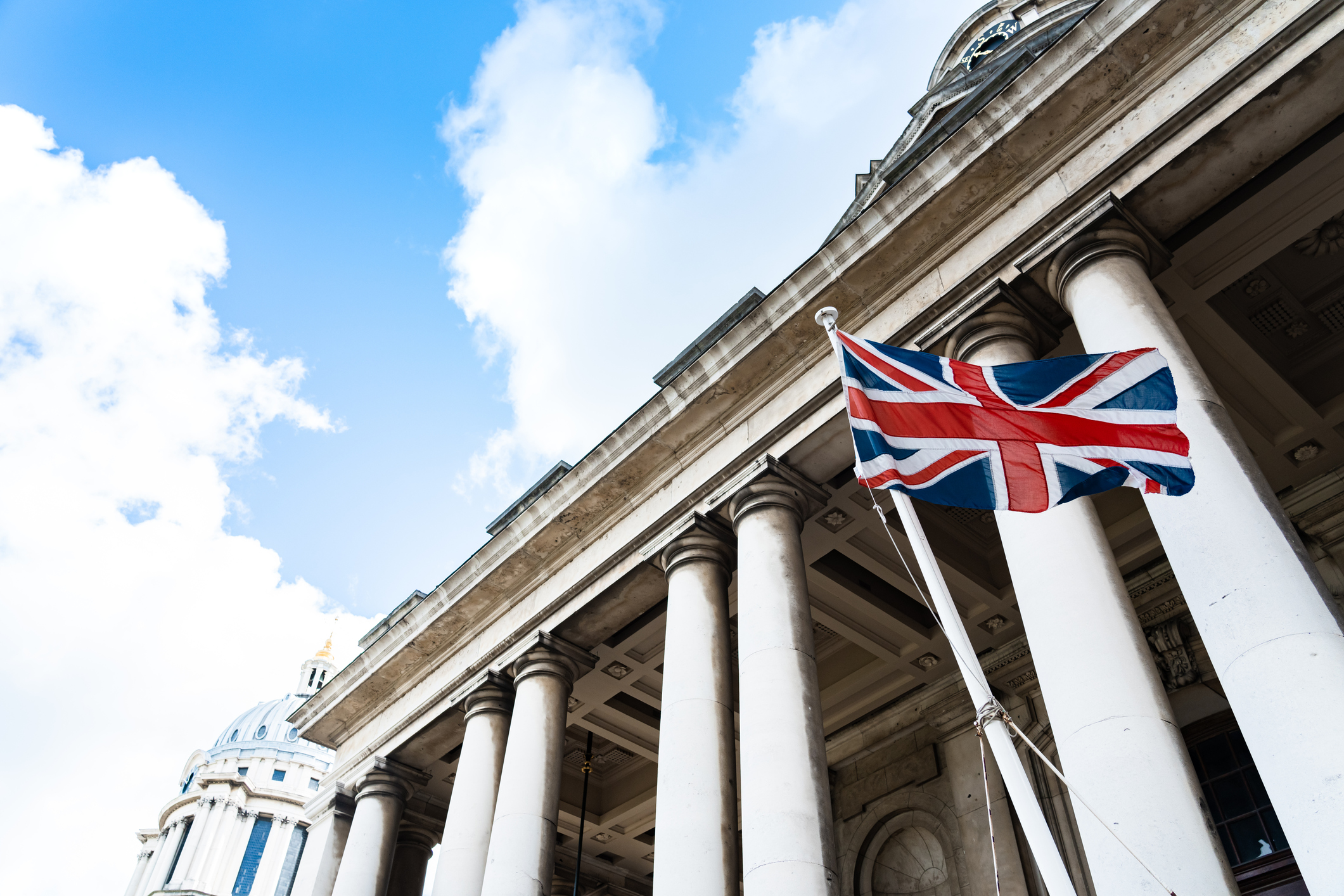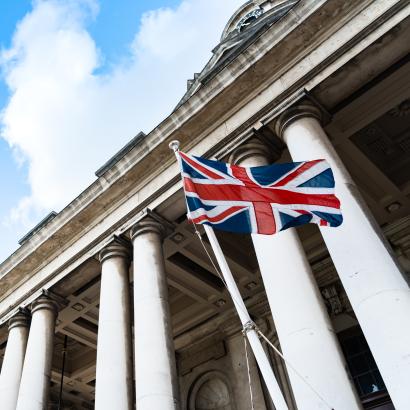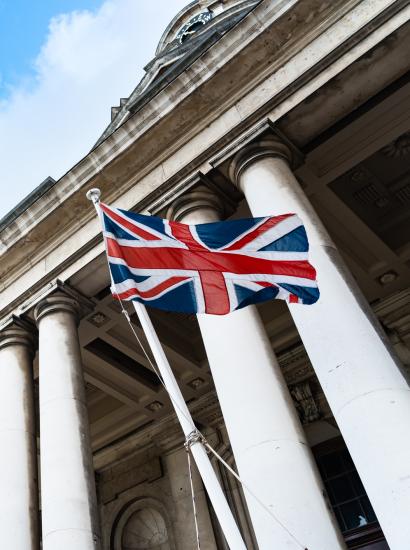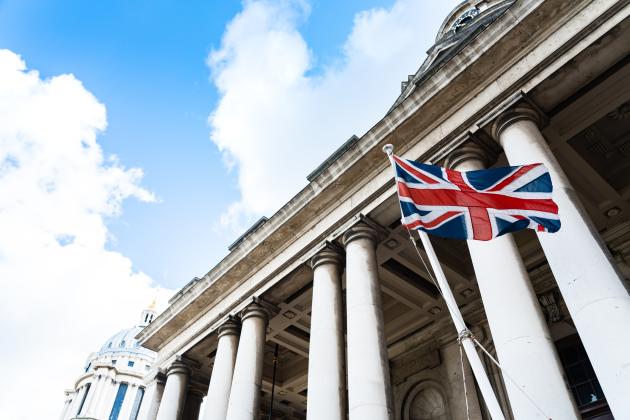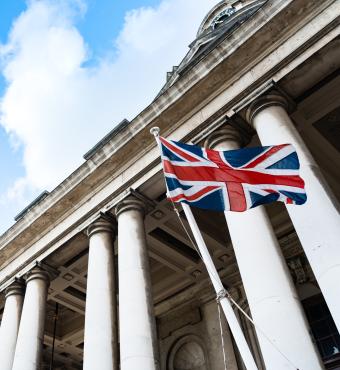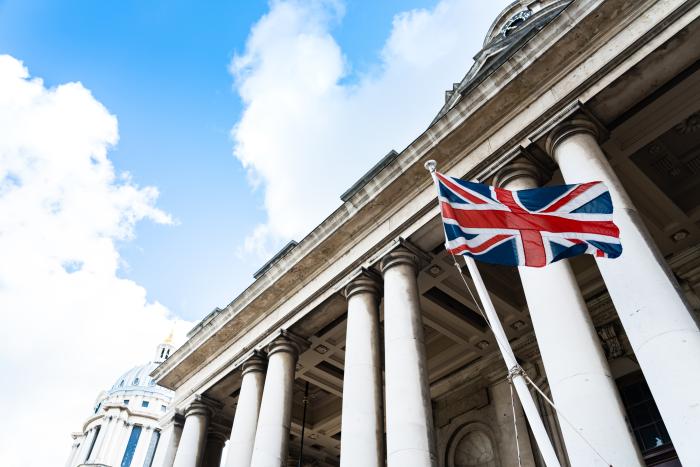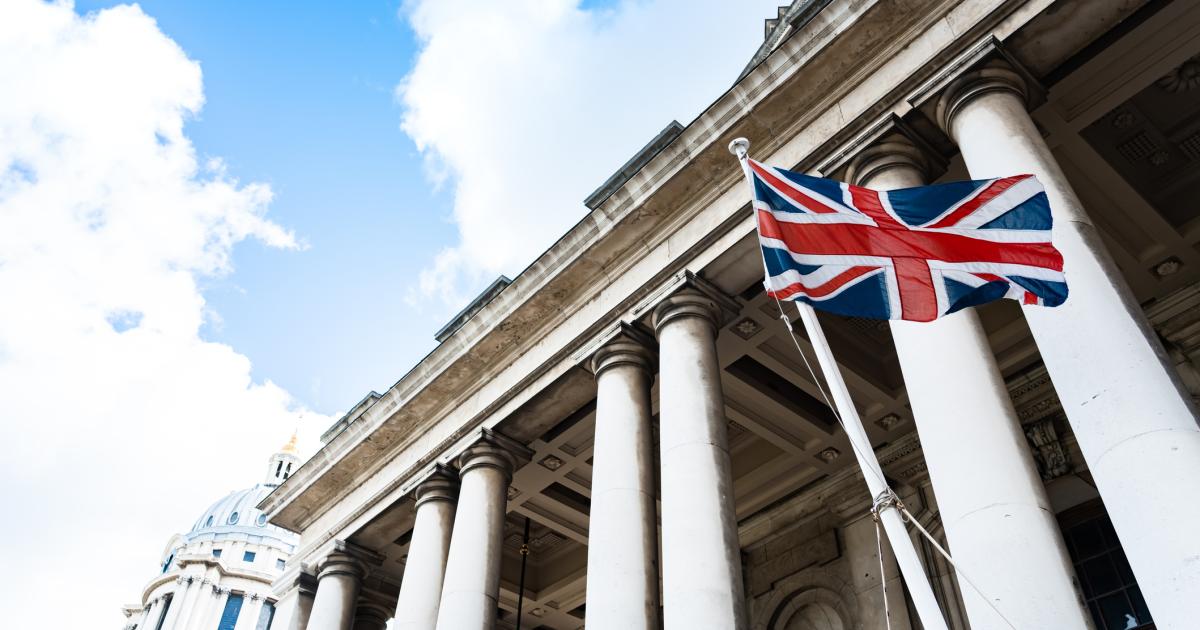
The Fourth of July parliamentary elections in the UK were a “Throw the bums out!” moment. After fourteen years and five prime ministers, a Conservative Party that had outlived its political welcome was emphatically rejected and ejected by the British people.
The Labour Party won in a landslide, securing an enormous majority in the House of Commons. Led by Sir Keir Starmer, it won 411 out of 650 seats, a gain of 209 in comparison to the 2019 election results. The Conservatives were reduced to 121 seats, an astounding 244 fewer than after 2019. This gave Labour a 290-seat majority over the Conservatives and a 173 overall majority, the third-largest of any party since 1900.
A variety of “third party” and independent candidates won 117 seats—almost as many as the Tories. One final seat is held by the speaker of the House of Commons, who plays a non-partisan role and is typically not included in party totals.
This outcome was as good as Labour dared hope and as bad as the Conservatives feared. By comparison, the 80-seat majority of Boris Johnson’s Tories after the 2019 election, which was considered a sweeping victory, now looks almost small.
Because of this large Labour majority, the relatively small Conservative opposition, and the predominantly progressive orientations of the “third” parties, we should not expect many close parliamentary votes in the years to come. Labour has an opportunity to implement significant policy, regulatory, and constitutional reforms, and there’s not much anyone can do about it.
To better understand this historic election, this essay examines the outcomes, the electoral rules of the game, the nature of power in Westminster, and the multiparty system. Subsequent essays will discuss why these results happened, the opportunities and challenges for Labour, and how the Conservative Party might respond.
Meet the new boss
In Britain, the transfer of power happens almost immediately, and the monarch plays a central role. Following convention, Keir Starmer visited Buckingham Palace the day after the election, was asked to form a government by King Charles III, and instantly became prime minister. On the same day, the outgoing Conservative prime minister, Rishi Sunak, moved out of 10 Downing Street and Sir Keir moved in. There is no American nonsense about a two-month “transition” from election to inauguration or a legislative “certification” of the election.
(It is worth noting that his “Sir” does not indicate an inherited title; Starmer was knighted in 2014 for his work as director of public prosecutions. His mother was a nurse and his father a toolmaker. He may be an Oxford-educated lawyer but he is not part of the Eton-Oxford-style “chumocracy” that has attracted so much criticism in recent years.)
What are the rules?
The basic structure of parliamentary elections will be familiar to anyone who follows elections to the US House of Representatives. The nation is divided into 650 unique districts, called constituencies, and each is represented by a single MP. The acreage of constituencies may vary considerably, but their populations are roughly similar.
The winner is decided by the first-past-the-post system, in which a candidate needs only one more vote than any other candidate, not a majority. There are no runoff elections. Constituency boundaries are occasionally redrawn, but in a nonpartisan process that would shock a gerrymander-happy American state legislature. Other features, such as campaign-finance laws and party candidate selection procedures, are very different from those in the United States.
Where the power lies
Imagine that the House of Representatives is the only true political power in America—no Senate, no president, no governors, and no state legislators. Imagine that this House runs one of the most centralized nations in the global North, whereby the national government decides almost everything meaningful, including what local governments can decide and how much they can spend. If that House chooses to “devolve” some powers to regional assemblies, it can always take them back or block policies it opposes.
Furthermore, imagine that there is no formal constitution, which means few if any limits on the powers of the chamber, little direct court power to strike down laws as unconstitutional, and no way to prevent the House from rewriting the fundamental rules of politics. That unconstrained House of Representatives would be approximately equivalent to the House of Commons.
Although this description undoubtedly leaves out some political nuance and complexity, it broadly illustrates the core differences between the US and UK systems. The main constraint on the power of a British government is represented by the idea of “good chaps who know how to play the game.” In other words, internalized understandings about what is right and wrong are ultimately the only meaningful limitation a government faces, and these boundaries have been tested by Conservative governments in recent years.
As a consequence of this remarkable power, the British look to Parliament to solve almost every problem, and the nation has no end of problems. We can debate whether this focus on the central government is wise, but the question of the moment is whether Labour can do a better job than the Conservatives. Starmer and his party will certainly have plenty of opportunity to bring about change. Assuming it does not lose a confidence vote—and I’ll eat my bowtie collection if it does—Labour can stay in power until July 9, 2029.
That is a long time, and it will seem very long indeed to opposition parties with no filibuster, veto, midterm elections, or other mechanism to derail Labour. While a great deal of genuine debate, artificial controversy, theatrical Prime Minister’s Questions, real and manufactured scandals, and House of Lords delays will undoubtedly take place within Westminster, opposition to a strong parliamentary majority often amounts to little more than “heckling the steamroller.”
The partisan order of battle
Americans who want more than two party choices on the ballot should be immensely envious of British voters. Far from endlessly choosing between “Team Red” and “Team Blue,” UK elections feature many parties, and with different colors. This is essential to understanding recent election outcomes, as it determines how votes are translated in seats and provides unique opportunities for tactical voting.
The following table lists the parties represented in the newly elected Parliament, excluding the unique Northern Irish parties. The numbers elected in 2019 do not necessarily equal the numbers still in office in 2024, as by-elections, party switching, and party suspensions can change the figures.
|
|
|
|
|
|
|
|
|
|
|
|
|
|
|
|
|
|
|
|
|
|
|
|
|
|
|
|
|
|
|
|
|
|
|
|
|
|
|
|
|
|
|
|
|
|
|
|
|
|
|
|
|
|
|
|
|
|
|||||
British voters therefore send a wide range of parties to the House of Commons despite using very similar electoral rules as does the US House. In America, voters who want to support “third parties” often are told, “don’t waste your vote.” In Britain, voters see plenty of evidence that third-party candidates can and do win.
Voting in a multiparty system
This gives options to voters while also creating threats and opportunities for the political parties. In the recent election, a voter who tired of the Conservatives could choose among multiple alternatives, some of which might be more palatable and more likely to win than others.
For example, some Conservative voters who would never support Labour might be willing to vote for the more centrist Liberal Democrats depending on the circumstances. For various historical reasons, the Lib Dems (and its Liberal Party predecessor) have blossomed in many of the same areas as the Conservatives, such as the Tory strongholds in the south of England termed the “Blue Wall.” Voting Lib Dem is therefore a socially acceptable alternative, so to speak, for many Conservatives in a way that voting Labour is not. And indeed, the post-election map shows the color orange has now spread across the South and Southwest of England, but not so much in the traditional (albeit weakening) Labour strongholds in the North and Midlands.
Similarly, a Labour supporter who sees the party under Starmer as abandoning the left might vote Green. Another voter, amenable to populist appeals, might vote Reform instead of Labour or Conservative. British elections therefore offer voters a rainbow of ideologically meaningful colors.
This multiparty system also allows for tactical voting, which is largely absent in American elections. In 2024, a tactical voter who prioritized defeating the Tories would support the candidate most likely to do so, regardless of whether that person was her true first choice. For example, a Lib Dem supporter who lived in a northern constituency might vote Labour if that party’s candidate was the best positioned to beat the local Tory.
The Labour victory: strong or fragile?
With 411 MPs, Labour had about 63 percent of the total members. At dissolution, Labour had 205 members, or 31.5 percent. A 30 percentage-point increase in membership is in stark contrast to the gerrymandered US system, in which only a relatively small share of House seats are likely to “swing” in any given election.
Other evidence indicates a dramatic Labour victory, particularly a variety of records that fell in the election. The Independent noted that the Conservatives not only ended up with the fewest seats in their history (35 lower than their previous low in 1906) but also received their lowest vote share (7 percentage points lower than in 1997). Labour won the third-highest number of seats in its history, only behind the Tony Blair landslides of 1997 and 2001. The Conservatives lost some seats held for many decades, including Dorset West (since 1885), Basingstoke (1914), Aldershot (1918), Macclesfield (1918), Aylesbury (1924), and Chichester (1924).
On the other hand, while Labour won the third-largest parliamentary majority since 1900, it did so with the “lowest ever share of the vote for a party that has won a majority at a general election.” According to the Daily Telegraph, “The election result is the most distorted in history after Labour won nearly two-thirds of seats with just a third of the popular vote.”
The 2024 results show a strong increase in the vote for “third party” and independent candidates. The Tories were hit hard by competition from the populist-right Reform party as well by the Liberal Democrats. The popular vote share for Labour was almost unchanged since 2019, although the electoral outcome was dramatically different. Voter turnout was also the second-lowest in almost a century.
The vote-share to seat-share gap may have been historically high in 2024, but the general phenomenon is a common feature of first-past-the-post electoral systems. In previous years, it was the Lib Dems who most consistently got the short end of the stick. In 2019, they received about 12 percent of the vote but won under 2 percent (eleven) of the seats. In 2015, the UK Independence Party (UKIP) received 12.6 percent of the vote but won a single seat.
Unfair electoral system?
The losers in 2024, from this vote-seat gap perspective, were Reform and the Greens. Reform won over 14 percent of the vote, and the Greens almost 7, but each received less than 1 percent of the seats.
This has generated some discussion about the disproportionality of the electoral system, but the rules are the rules. As with the US Electoral College, the national popular vote share plays no formal role and is just a byproduct of the competition for what matters: electoral votes (in the US) and parliamentary seats (in the UK). And the Lib Dems showed that a party can impressively increase its number of seats even while its popular vote percentage remains essentially static (although tactical voting may have changed some of its composition). In 2024, its vote share was almost the same as its seat share.
Some observers have pointed out that British voters decisively rejected a referendum in 2011 that would have changed the voting system to the Alternative Vote (AV), so it is difficult to claim that the current system has no popular support. And more practically, the Labour government is highly unlikely to unilaterally change an electoral system that just rewarded the party so well. They may extend the franchise to sixteen- and seventeen-year-olds or expand the number of documents that meet voter ID requirements, but these reforms will likely just augment the Labour vote (although perhaps less than anticipated, if growing support among younger voters for the Greens continues).
Larry the incumbent
In an election that saw historic changes, at least one feature of British politics remains the same: Larry the cat, the Chief Mouser to the Cabinet Office. Adopted from the Battersea Dogs & Cats Home, he has lived at 10 Downing Street since 2011. He can be seen patrolling his territory, chasing birds, and defending it against rival cats and urban foxes.
He has also seen off five prime ministers and is now experiencing his sixth. This may only be rivaled by Queen Elizabeth II, who had fifteen prime ministers, ranging from Winston Churchill to Liz Truss. Larry’s continuing presence at the heart of power is undoubtedly reassuring the nation during this time of change.








